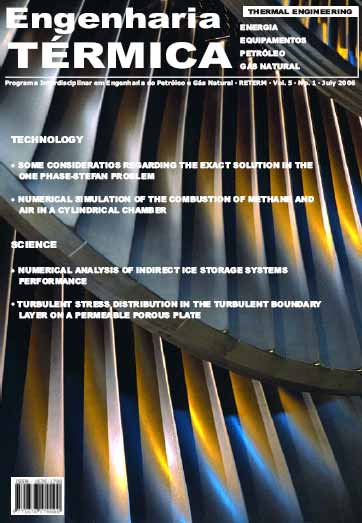MODELLING THE HYDROTHERMODYNAMICS OF THE SURFACE LAYER OF A STRATIFIED TROPICAL SUBTROPICAL OCEAN
DOI:
https://doi.org/10.5380/reterm.v5i1.61674Keywords:
hydrothermodynamics, ocean models, eastern ocean boundaries, finite elements, Petrov-Galerkin formulationAbstract
In the present paper a two-layer model is developed for the non-permanent hydrothermodynamics of a tropical subtropical coastal ocean. The model includes the equations of motion, continuity and heat. The equations apply only to the thin and warm oceanic surface layer. The deep layer is stipulated to be motionless, arbitrarily deep and separated from the upper layer by a density discontinuity. Cold deep water is carried across the interface from the lower into the upper layer; it is warmed up there by the net energy input from the atmosphere into the ocean The non-uniform sea surface wind stress and heat at the surface are the main forcing functions of the model. A numerical finite element method is proposed to approximate the hydrothermodynamic problem. The model uses simple linear spatial and temporal continuous polynomial and a stabilizing Petrov-Galerkin operator to improve the classical finite element Galerkin method. The hydrothermodynamic response is obtained for the eastern pacific boundary in the southern hemisphere. Monthly climatological data are used to determine the wind and heat fluxes forcings of the model. The main features of the observed Sea Surface Temperature (SST) pattern are successfully simulated by the model. In particular the predicted : upwelling along the coastal boundary; warm water intrusion in offshore side and signals of countercurrents are in a quite good agreement with observations.
Downloads
Published
How to Cite
Issue
Section
License
Direitos Autorais para artigos publicados nesta revista são do autor, com direitos de primeira publicação para a revista. Em virtude da aparecerem nesta revista de acesso público, os artigos são de uso gratuito, com atribuições próprias, em aplicações educacionais e não-comerciais.



